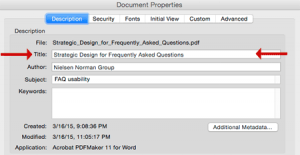There is no doubt about it; contemporary marketers are increasingly reliant on the digital medium in the modern age, and whilst digital will continue to be a priority for brands in 2017, it is now becoming an emerging trend to maintain an integrated marketing strategy that includes a diverse array of mediums, such as outdoor media.
With Google Adwords and other paid online media becoming vastly more competitive (and expensive) in a crowded marketplace, Out-of-Home (OOH) advertising has been experiencing a huge surge in popularity as brands are becoming more aware of the traditional benefits of utilising the power of outdoor to influence consumer purchasing decisions, and here’s why.
#1 – OOH Adverts Effectively Target Specific Customer Segments
In simple, statistical terms, the total OOH spend has grown by a staggering 30.5% over the course of the last 12 months. This reflects the growing level of confidence that exists in the medium, which in turn is based largely on the capacity of OOH to effectively target defined consumer segments.
By their very nature, OOH channels such as paper and digital boards leverage in-depth demographic data to ensure that advertisements are placed in strategic, geographic locations.
As concepts such as analytical CRM have subsequently enabled brands to build more complex streams of data and more refined customer profiles, OOH advertising has emerged as one of the most effective outlets for such insight.
More specifically, alternative campaigns and messaging can be deployed on adverts in different locations, depending on the audience that is being targeted.
This is a huge critical advantage, especially when you are looking to optimise your ROI and overall sales conversion rates.
#2 – OOH Advertising Offers Cost-effective and Flexible Pricing to Brands
The concept of flexibility is an interesting one and something that continues to reposition OOH advertising as a viable contender in the marketing realm.
While one of the prime benefits of digital and social marketing is the range of choice that they offer to businesses in terms of dictating their overall spend, recent innovations in the OOH sector have delivered similar cost advantages to companies.
This is particularly true in relation to traditional OOH channels such as paper billboard advertisements, which are cost-effective and profitable in the current climate.
And whilst it’s common for large agencies and networks to operate OOH advertising for the enterprise brands, the market is now wide open for local businesses to reach more customers via traditional paper billboard ads, as opposed to digital billboards at a higher expense.
“Billboard advertising remains the premium choice for any Out Of Home campaign, and we believe everyone should have access to it.” says Simon Boon, director of outdoor advertising company Airoutdoor.
“There are many vaunted benefits of digital billboards, but when it comes to exposure, it is paper ads that offer a more cost-effective solution to local brands.”
“This is primarily because they can spend less on securing an exclusive advertising space through paper billboards, and one which is visible 24/7 and not shared with other advertisers.”
#3 – OOH Marketing is Proven to be Engaging and Has a Greater Impact on Customers
There is a growing sense of fatigue and cynicism when it comes to newspaper print and television ads. Much of this has to do with the level of saturation that exists among such mediums, while the fact remains that an estimated 54% of consumers do not trust large, corporate entities.
Customers are thought to actively seek out advertising material in locations such as London’s Underground, which explains why OOH advertising in this and similar locations across the globe has an impressive engagement rate of around 16%.
This suggests that channels such as posters and digital billboards are seen as natural and organic vehicles that add value to their surrounding environment rather than being intrusive and targeting people in their own, personal space.
The bottom line is that OOH adverts are now more likely to engage customers and influence their spending habits, whereas television and newspaper ads are viewed with increased cynicism as 2016 comes to a close.
#4 – OOH Advertising Offers an Exclusive Promotional Outlet
There is no doubt about it; online advertisements are often forced to compete in an enduringly busy and cluttered space. This is far from ideal, as it restricts the level of impact that individual ads can have and limits the value proposition of some digital marketing channels.
While the same criticism can also be levelled in part at digital billboards (which operate according to an industry average through which six advertising slots are shown for 10 seconds each during the course of a minute), it cannot realistically be aimed at traditional, paper-based OOH ads. This is because paper billboards are always visible, optimising the reach of your message and your likely ROI in the process. This is an important consideration, especially for brands that are looking to build awareness and reach new demographics through advertising.
This is an example of how even one of the most traditional iterations of OOH can thrive in a predominantly digital realm, particularly when it is strategically placed and targeted at a clearly defined consumer profile. It also highlights one of the core advantages that has led to the popularisation of OOH advertising in 2016, while highlighting a common problem that defines competitive and saturated digital channels.
The Last Word
Any of these factors would compel brands to at least consider the various merits of OOH advertising in 2017.
When combined, however, these points make a persuasive argument for businesses to prioritise the OOH medium in the year to come, as they look to restructure their marketing spend and achieve an improved ROI.
So, while the world and his wife may be continuing to invest heavily in digital (while eschewing traditional, offline advertising mediums), there is every reason to make OOH channels a seminal part of an integrated marketing strategy in 2017 and beyond.
Business & Finance Articles on Business 2 Community(71)







